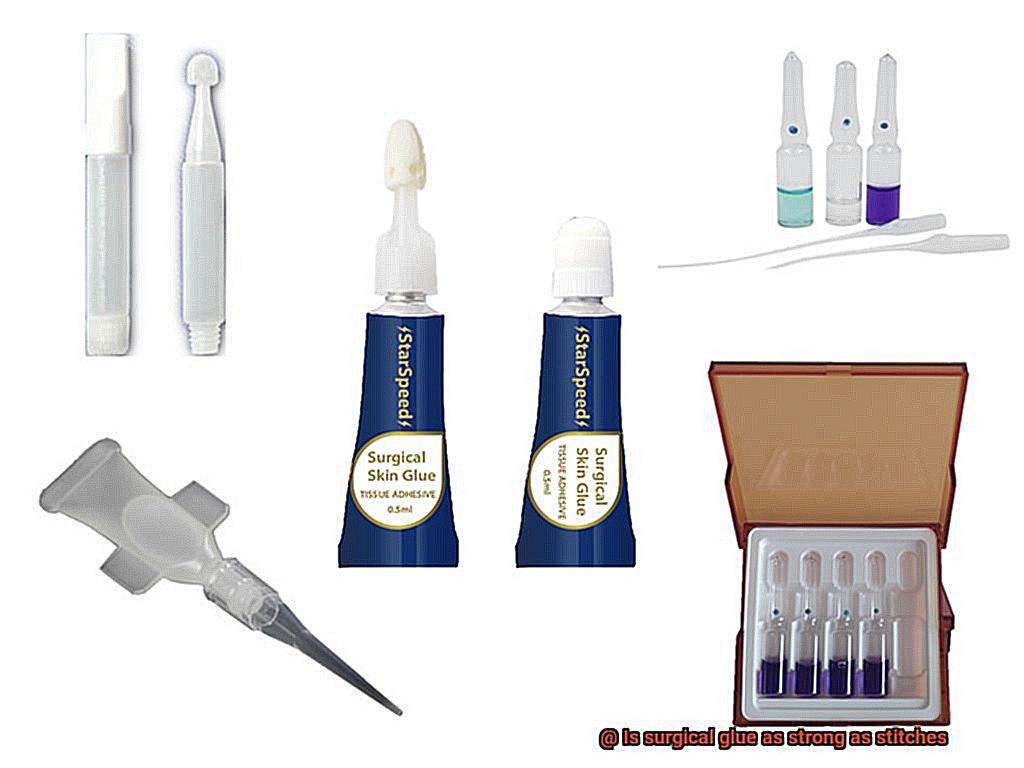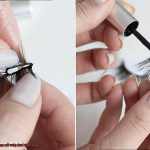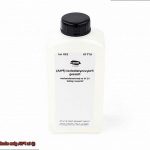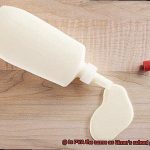When it comes to closing up wounds, there are two heavyweights in the medical ring: surgical glue and stitches. But here’s the million-dollar question: is surgical glue really as strong as stitches? This topic has sparked a fierce debate among medical professionals and piqued the curiosity of patients who want nothing but the best for their healing process.
Surgical glue, also known as tissue adhesive or liquid stitches, is like a superhero of wound closure. It’s a special kind of adhesive that bonds those pesky wound edges together, promoting healing without having to rely on traditional stitches. While stitches have been the go-to method for ages, surgical glue has been making waves with its user-friendly nature, reduced scarring potential, and quicker procedure times.
But let’s not jump to conclusions just yet. We need to weigh the pros and cons of each technique. Stitches, or sutures if you want to sound fancy, use medical-grade thread to mechanically hold the edges of your wound together. This method has a long-standing track record of success, offering impressive strength and durability. Stitches are particularly favored when it comes to deep wounds or areas under tension (think scalp or joints).
Now let’s compare these two contenders. Surgical glue really shines in superficial wounds where tension is minimal. It’s perfect for small cuts, scrapes, or surgical incisions with well-aligned edges. Plus, it forms a waterproof barrier that keeps infections at bay while giving your body a head start on healing itself. And here’s an added bonus: if you’re allergic to sutures or have needle anxiety (we totally get it), surgical glue is a non-invasive alternative that won’t send shivers down your spine.
But hold your horses. There are some situations where surgical glue might not be enough muscle power. Sutured wounds tend to offer better tensile strength, making them the champions for high-stress areas or wounds that need some extra support during the healing process. Stitches also allow for precise alignment of those wound edges, keeping scars to a minimum and leaving you with a cosmetic outcome that’s nothing short of fabulous.
At the end of the day, choosing between surgical glue and stitches is like picking your favorite ice cream flavor – it all depends on your individual circumstances. Factors like where the wound is, how deep it goes, and how much tension is involved should be taken into account. By understanding what
What is Surgical Glue?
Contents
In the realm of wound closure, surgical glue and stitches have long been the top contenders. However, the question remains: Is surgical glue as robust as stitches? In this article, we will explore the properties and applications of surgical glue, comparing its strength to traditional stitches, and shed light on the factors that influence its efficacy.
Properties and Uses of Surgical Glue:
Surgical glue, also referred to as tissue adhesive or medical adhesive, is a liquid substance crafted from synthetic polymers like cyanoacrylate or octyl-2-cyanoacrylate. Not only is it biocompatible and safe for internal use, but it also boasts a simple application process. With a brush or applicator, it is artfully applied to the wound edges, creating a flexible and waterproof bond that dries swiftly.
Advantages of Surgical Glue:
Convenience reigns supreme among surgical glue’s many advantages. By eliminating the need for traditional stitches, it expedites wound closure and minimizes scarring. Furthermore, unlike stitches, surgical glue doesn’t require removal. Instead, it gradually breaks down over time, absorbed by the body.
Limitations of Surgical Glue:
Though surgical glue is an invaluable asset in wound closure, it may not be suitable for all types of wounds. In areas prone to movement or those under tension, such as joints, its strength may prove insufficient. In such cases, traditional stitches may offer better support.
Comparing Strength:
The strength of surgical glue in comparison to stitches hinges upon several factors. These include the type of glue employed, wound location and size, as well as an individual’s healing process. For small superficial wounds, surgical glue can provide a secure bond on par with stitches. Conversely, for larger or deeper wounds requiring tension control, stitches may offer superior support.
Making an Informed Decision:
Ultimately, the decision to employ surgical glue or stitches lies in the hands of trained healthcare professionals. They meticulously evaluate wound size, location, and the patient’s medical history to determine the most suitable closure method.
What are Stitches?
When it comes to closing wounds, stitches have been a trusted method for centuries. These tiny threads play a crucial role in ensuring proper wound healing and minimizing scarring. In this article, we will explore the world of stitches, their different types, materials used, and their significance in medical procedures.
Types of Stitches:
Stitches come in different types, each with its own purpose and application:
- Interrupted Stitches: This classic stitch involves individually sewing each stitch through the skin and tying them separately. It offers excellent wound approximation and allows for easy removal if necessary.
- Continuous Stitches: Also known as running stitches, this technique involves using a single long thread to loop through the skin multiple times before tying off at the end. Continuous stitches are often used for long incisions or wounds that require extra support.
- Mattress Stitches: When additional support or tension is needed for wound closure, healthcare professionals opt for mattress stitches. This technique involves placing stitches further from the wound’s edge, creating a layered effect that provides enhanced stability.
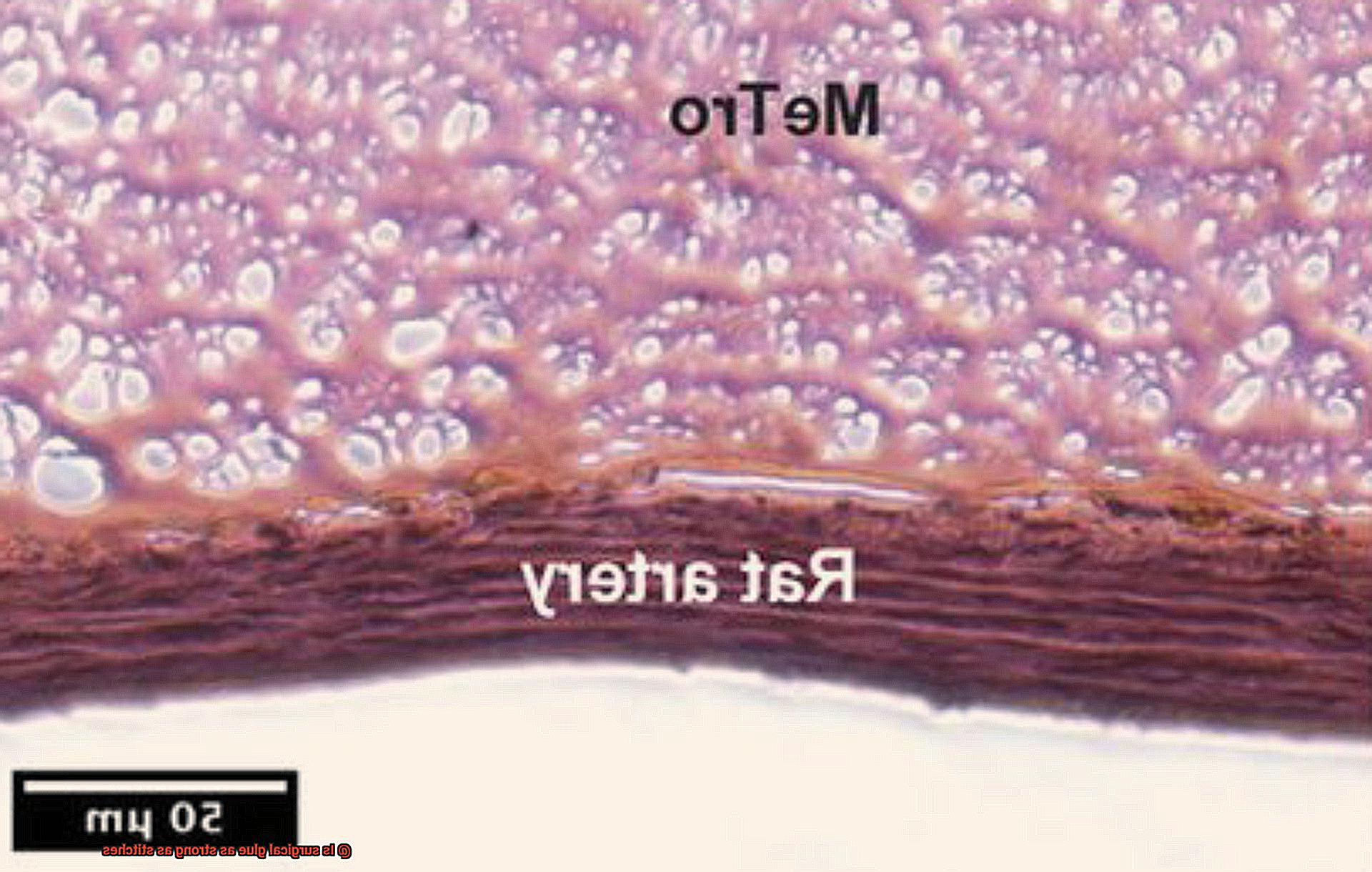
Materials Used:
Stitches can be made from various materials, each with its own unique properties:
- Absorbable Stitches: Made from materials like polydioxanone (PDO) or polyglycolic acid (PGA), absorbable stitches naturally break down over time, eliminating the need for removal. They are ideal for internal wounds or areas where accessibility is limited.
- Non-Absorbable Stitches: Nylon and silk are common materials used for non-absorbable stitches. These stitches require manual removal by a healthcare professional once the wound has healed sufficiently. They are usually used for external wounds where longevity is required.
The Strength of Stitches:
Stitches provide excellent wound approximation, ensuring that the edges of the wound are held together firmly. This reduces the risk of infection and promotes proper healing. The flexibility of tension adjustment allows healthcare professionals to customize the application based on individual patient needs.
Limitations and Alternatives:
While stitches are generally effective, they do have some limitations. Skillful technique is required to ensure proper alignment and tension. Removing non-absorbable stitches can cause discomfort and leave behind small puncture marks.
In recent years, surgical glue has emerged as an alternative to traditional stitches. This adhesive substance, composed of cyanoacrylate compounds, forms a strong bond when exposed to moisture. Surgical glue offers faster application and reduced patient discomfort during removal. However, its strength may not match that of traditional stitches in all cases.
Strength of Surgical Glue vs Stitches
In the ever-evolving field of wound closure, surgical glue and stitches stand as formidable contenders, each offering their unique strengths and weaknesses.
This article aims to compare and contrast the strength of surgical glue versus stitches, shedding light on their advantages and disadvantages.
By delving into their properties and applications, we hope to determine the ultimate winner in this epic battle.
The Strength of Surgical Glue:
Surgical glue, known as tissue adhesive, is a medical adhesive that bonds wound edges together. It forms a robust connection with underlying tissues, promoting healing and preventing infection.
In terms of strength, surgical glue is comparable to stitches, effectively holding wound edges together. Its quick and easy application reduces procedure time significantly while eliminating the discomfort caused by needle punctures.
The Strength of Stitches:
Stitches have long been hailed as the gold standard for wound closure due to their secure nature and ability to withstand tension. They come in various types and materials, such as interrupted stitches for precise wound approximation, continuous stitches for extra support in long incisions, and mattress stitches for added strength. While non-absorbable stitches require manual removal, absorbable stitches dissolve over time within internal wounds.
Advantages of Surgical Glue:
Surgical glue offers several advantages over stitches. Firstly, it creates a waterproof barrier over the wound, shielding it from bacteria and reducing the risk of infection. This feature is particularly beneficial for wounds in moisture-prone areas like the hands or feet. Additionally, the application of surgical glue is a quick and painless process, saving valuable time in the procedure room.
Disadvantages of Surgical Glue:
Despite its strengths, surgical glue may not be suitable for all wounds. It may lack sufficient strength for wounds under tension or those at a higher risk of reopening. Stitches are generally preferred for deep cuts or incisions in constantly moving areas of the body. Furthermore, surgical glue may not be as adjustable or removable as stitches, limiting its adaptability in certain situations.
Advantages of Surgical Glue Over Stitches
Surgical glue has revolutionized wound closure methods with its numerous advantages over traditional stitches. Let’s explore why surgical glue is the superhero of wound closure.
First and foremost, surgical glue promotes faster healing. This magical adhesive forms a protective barrier over the wound, sealing it up and accelerating the healing process. Unlike stitches that require time-consuming insertion and removal, surgical glue works its magic quickly, allowing wounds to heal at lightning speed.
In addition to faster healing, surgical glue offers the advantage of reduced scarring. Nobody wants unsightly scars on their skin, especially in visible areas like the face or hands. Fortunately, surgical glue adheres to the skin without causing any tissue damage, leaving behind a more aesthetically pleasing outcome. Say goodbye to visible marks and puncture wounds.
Flexibility is another remarkable advantage of surgical glue. Unlike stitches that can restrict movement and cause discomfort, surgical glue allows for natural movement without compromising wound closure. So go ahead, wiggle those fingers or show off your dance moves without any worries.
When it comes to infection prevention, surgical glue takes the lead. The adhesive creates a protective seal that keeps bacteria out of the wound, significantly reducing the risk of infection. Stitches, on the other hand, create tiny puncture wounds that can potentially introduce bacteria into your body. Additionally, if stitches aren’t removed properly, they can also increase the risk of infection. With surgical glue, you can say goodbye to those worries and focus on healing.
Pain and discomfort are also minimized with surgical glue. Many patients find that the application of glue is painless and doesn’t require anesthesia. Stitches, on the other hand, can be uncomfortable both during insertion and removal, often requiring local anesthesia to numb the area.
Time efficiency is another advantage of surgical glue. Applying glue is generally faster than inserting stitches, making it a time-efficient option for both patients and healthcare professionals. In emergency situations where quick wound closure is necessary, surgical glue can be a lifesaver.
Last but not least, surgical glue is incredibly versatile. It can be used on various types of wounds, including lacerations, incisions, and even certain types of burns. Stitches may not always be suitable for delicate or hard-to-reach areas, but surgical glue provides a versatile alternative that can be applied to a wide range of wounds.
When to Use Stitches Instead of Surgical Glue
When it comes to closing wounds, there are two main options: stitches or surgical glue. Both methods have their advantages and can be effective in promoting proper healing. However, there are certain situations where stitches are preferred over surgical glue.
- Deep, long, or jagged wounds: Stitches provide tension that helps bring the edges of the wound together, ensuring proper alignment for healing. The precision and control offered by stitches make them a better choice in these cases.
- Areas prone to movement or tension: Stitches are favored in joints or areas with significant muscle activity because they provide added stability and support. This helps keep the wound closed during the healing process, preventing reopening and potential complications.
- Cosmetically sensitive areas: Stitches allow for precise alignment and control of the wound edges, resulting in a more aesthetically pleasing outcome. While surgical glue can be used in these areas, stitches offer greater control and precision.
On the other hand, surgical glue is typically used for superficial wounds that are small, clean, and have straight edges. It works by bonding the edges of the wound together using a special adhesive. This eliminates the need for sutures and can result in a quicker and less invasive procedure.
Surgical glue is commonly used for closing incisions after surgery because it provides a strong enough bond to keep the skin closed during the initial healing phase. It also reduces the risk of infection compared to stitches since there are no puncture wounds from needles involved.
However, surgical glue is not suitable for all types of wounds. It should not be used on contaminated or infected wounds as it can trap bacteria and impede proper healing. Additionally, if a wound is under tension or subject to movement, surgical glue may not provide enough strength to keep the wound closed.
Risks Associated with Using Either Method
When it comes to closing up wounds, there are two methods that often go head-to-head: stitches and surgical glue. It’s like a showdown between two superheroes, each with their own strengths and weaknesses. So, let’s dive into the risks associated with using either method and see which one comes out on top.
First up, we have surgical glue. This quick-drying adhesive is perfect for small, clean wounds with straight edges. It’s like a little champion that doesn’t need all the bells and whistles of stitches. However, one of the risks associated with surgical glue is the possibility of allergic reactions in some individuals. Imagine applying this superhero adhesive only to have your skin react with redness, itching, or swelling – not the kind of superpower anyone wants.
Another risk with surgical glue is its limited strength. In areas where there is high tension or movement, like joints or muscles, surgical glue may not be strong enough to hold everything together. Stitches, on the other hand, provide a more secure closure and are often preferred for wounds that require added strength. So, if you’re dealing with an action-packed wound scene, stitches might be the way to go.
Infections can occur with both surgical glue and stitches if proper wound care is not followed. However, stitches may have an advantage when it comes to drainage of wound secretions, reducing the risk of infection. Plus, removing stitches allows for an evaluation of the wound’s healing progress and early detection of any potential complications. Surgical glue doesn’t require removal, but it also doesn’t provide this benefit.
But wait. Surgical glue isn’t suitable for all types of wounds. It should never be used on contaminated or deep wounds because it doesn’t penetrate deeply into the tissue. Stitches are often preferred for these types of wounds as they provide better closure and help prevent infection.
And let’s not forget about the risks associated with stitches. Improperly placed stitches can lead to poor wound healing, increased scarring, or even tissue damage. This is why it’s essential for healthcare professionals to have proper training and experience in suturing techniques. Removal of stitches can also be uncomfortable or painful for patients, especially if they’ve been left in place for an extended period.
How to Choose the Right Wound Closure Method
When faced with a wound, it is crucial to choose the right closure method for optimal healing and minimal scarring. The two primary options are stitches and surgical glue. This article will explore the factors that should be considered when selecting the appropriate wound closure method.
Understanding the Strength of Stitches:
Stitches, also known as sutures, have stood the test of time as a reliable and robust wound closure method. Using a needle and thread, stitches sew the edges of the wound together, providing a secure closure. This method is particularly suitable for wounds under tension or areas prone to movement, such as joints. Stitches allow for precise alignment of the wound edges and offer better control over tension during closure.
Introducing Surgical Glue:
Surgical glue, also called tissue adhesive, is an innovative alternative to stitches. It is a liquid adhesive applied directly to the wound to hold the edges together. While surgical glue may not match the strength of stitches, it offers other advantages.
Its quick and easy application reduces procedure time and patient discomfort. The glue forms a bond with the skin and eventually dissolves or peels off independently. Surgical glue is often used for smaller wounds or superficial lacerations that do not require deep tissue closure.
Factors to Consider:
Several factors should be taken into account when choosing between surgical glue and stitches. First, consider the type and location of the wound. Surgical glue is suitable for small, superficial wounds with clean edges, while stitches are preferred for deeper or jagged wounds under tension or pressure. Additionally, consider the location of the wound; surgical glue works well in areas with thin or highly mobile skin, like the face or joints, while stitches provide additional support in areas with thicker skin.
Individual Circumstances:
Your medical history and individual circumstances play a significant role in selecting a closure method. Certain conditions or medications may affect wound healing or increase the risk of complications. Allergies to glue or sutures can also influence the decision. To make an informed choice, discuss your medical history with a healthcare professional who can guide you towards the most suitable closure method.
Desired Cosmetic Outcome:
If the appearance of scarring is a concern, stitches may be the preferred option. Stitches allow for precise alignment of the wound edges, resulting in a more aesthetically pleasing outcome. However, with proper wound care and management, both surgical glue and stitches can lead to satisfactory cosmetic results. It is important to discuss your desired cosmetic outcome with your healthcare provider to ensure the chosen closure method aligns with your expectations.
ZUfrVNA4Xdw” >
Conclusion
In conclusion, surgical glue is a viable alternative to traditional stitches.
Not only does it provide a strong bond, but it also offers several advantages such as reduced scarring and faster healing times. With its ability to seal wounds quickly and effectively, surgical glue has become a popular choice in many medical procedures.
While stitches may still be necessary for certain cases, the strength of surgical glue should not be underestimated.

